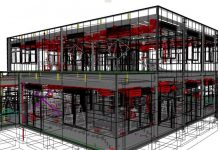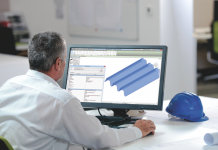A new strategy has been launched, aimed at future proofing the sector, while expanding the benefits of BIM for SMEs
In response to plans set out in its 2015 Annual Report, BIM4SME has revealed new plans for the future of the sector.
The digital2all initiative has been developed from The Industry Strategy – Construction 2025, Digital Built Britain, the Business and Professional Services Strategy, and the Information Economy Strategy.
Together, these strategies will enable digital2all to develop a wider reach in securing the connectivity of the AECO (Architectural, Engineering, Construction and Operations) sector to others at a functional digital level. It is hoped the initiative will help to future proof the AECO industry and increase the benefits for SME, as well as the wider supply chain in construction and asset management.
Having met the BIM Level 2 agenda, BIM4SME will begin to wind down and hand over the reins to digital2all.
Chair of BIM4SME Tim Platts commented: “Having established a platform that has clearly demonstrated its ability to serve its intended audience we now need to tackle the future agenda beyond Level 2, and in doing so provide a sustainable future for the group, its work and its people.
“Our focus will remain on providing support to the SME in attaining Level 2, and over time the team will develop its agenda to serve the broader industry in respect of the impending digital revolution.”
Vice Chair Raj Chawla said: “It will take the industry time to successfully join up and connect seamlessly to the digital economy, but it is the spread of know how to both the big and small organisations in the sector that will determine the rate of change.
“While we all appreciate that the connected supply chain is the Holy Grail, digital2all is an attempt to start to gift the supply chain with the do’s and don’ts and provide a compass to set the direction.
“How to harvest and understand data, maintain it and migrate and most important of all, learn how to value it. These are key aspects of the digital agenda. The sector requires as much help and support as it can get in this transition.
“There are transitional models in the retail and the financial sector that are working very well and the objective is to learn and apply these methodologies and sciences to the construction sector.”
The initiative aims to inform, assist, educate, and empower the sector to work in the digital built environment. It will also bring together likeminded groups to deliver a consistent message in adopting the digital agenda, as well as raising awareness of the digital process for SME firms.













